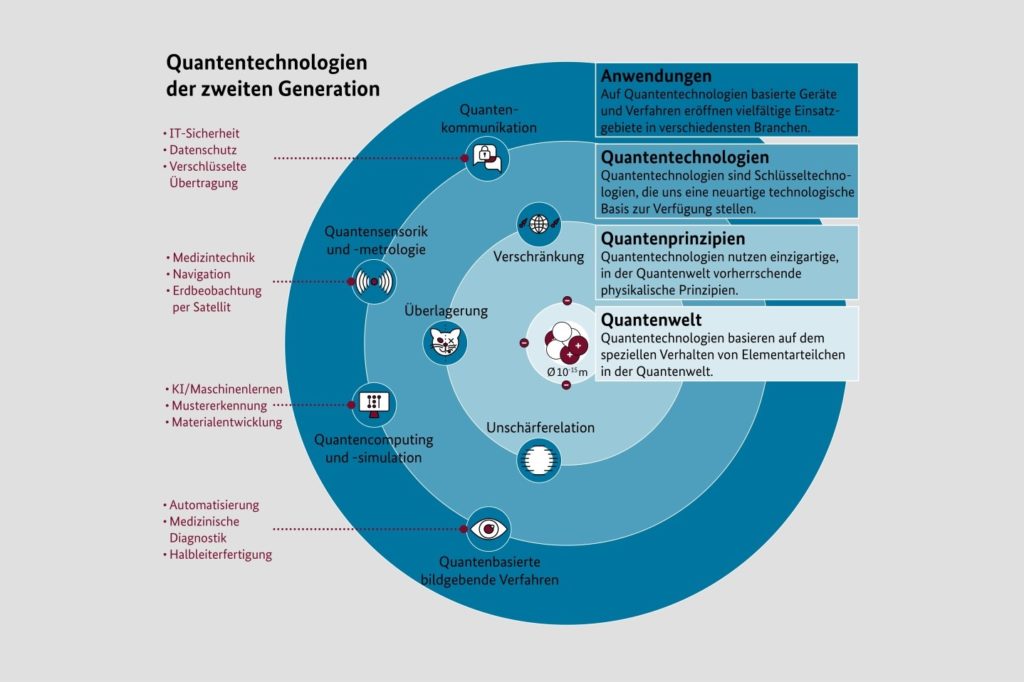Quantum technologies comprise novel revolutionary technological developments, often summarized with the controversial catchword “second quantum revolution”. Since the discovery and development of quantum physics more than a hundred years ago, the “first quantum revolution” has enabled technologies that have become an integral part of our everyday lives. Quantum physical processes are the basis for microelectronics, transistors, smartphones, lasers, magnetic resonance imaging and much more, since quantum mechanics and quantum electrodynamics determine natural phenomena on the microscopic scale.
However, these are technologies in which we cannot control single quantum objects individually, but only exploit the special average properties of many quantum systems collectively.
This is different with second generation quantum technologies, where we can control individual quantum objects such as single atoms, molecules or photons and use them for information processing, secure information transmission, or sensing and metrology.
These quantum technologies in the narrower sense include quantum computers, quantum simulation, quantum cryptography, quantum communication, quantum sensors and metrology and quantum-based imaging. These are based on active exploitation of the central principles and peculiar effects of quantum physics, which include in particular the superposition of states with contradictory properties (superposition principle), the peculiar phenomenon of entanglement, the uncertainty relation, discrete energy levels and the tunnel effect. Through active preparation, processing and readout of special quantum states, exotic quantum systems and processes are designed for special applications such as faster computation and solution of complex problems (quantum computers and simulation), secure information transmission (quantum cryptography), or high-precision sensor technology and metrology.

